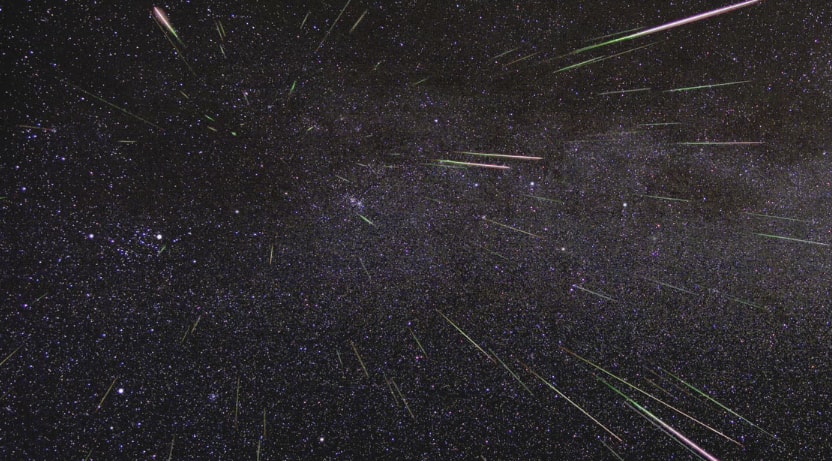As you may have noticed, we love space here at OWLconnected. One of the most exciting things to happen recently has been NASA's Juno spacecraft reaching Jupiter (you read all about it here and here). But now we've got something to report that's a lot closer to home. Get ready for some fireworks, people. The Perseid meteor shower is coming.
Now, if you're a sharp budding astronomer yourself, you may even know that the Perseid meteor shower is something that happens every year. (And if you really did know this, pat yourself on the back, because we didn't!) The annual shower takes place in August as the Earth travels through the debris left behind by an old comet. Been there, done that, right?
But before you get all blasé about it (that's fancy talk for "whatevs"), experts have a message for you. This will be one of the best years in recent memory to view these meteors.
Get a little closer

An image from last year's Perseid shower. (NASA/JPL)
Reports are that you may be able to see up to 200 meteors an hour streaking across the night sky at peak times. Incredible, right? The reason for this increased frequency is pretty simple. The orbit of Earth and the orbit of the comet are a little closer than usual. That means more of those icy chunks of space rock falling into our atmosphere and burning up in a spectacular burst of fire and light.
And just in case the words "Earth" and "closer" and "comet" make you a little nervous (fair enough!), allow us to calm your fears. The comet is nowhere near hitting us. And all of these interstellar chunks are far too small to do any damage. So yes, you are free to just sit back and enjoy the show!
When to watch
Well, free to watch as long as you can stay up, of course. That's because as with anything that involves watching the night sky, the hours are a bit crazy. For people living in North America, NASA is recommending that the best viewing will be on August 12th between midnight and dawn.
That means you'll have to set that alarm and likely arrange a date with one of your parents ("Hey, Dad! You love science, right...?"). Find a spot away from light sources on the ground and be prepared to wait a while, too. It will take about 45 minutes for your eyes to fully adjust to the dark, and therefore notice the most meteors. Other than that, lay on your back and enjoy the show. It should be a doozy!
 An image of the Perseid meteor shower in 2009. Experts are predicting that this year's shower should be even better over the next two nights. (NASA/JPL)
An image of the Perseid meteor shower in 2009. Experts are predicting that this year's shower should be even better over the next two nights. (NASA/JPL)









